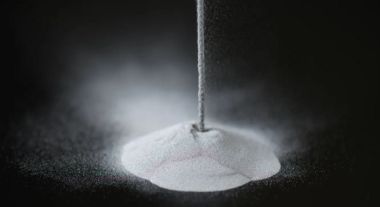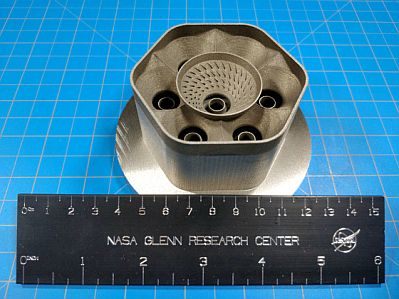NASA's New Super Alloy Lasts 2,500x Longer, Making Airplane and Spacecraft Parts More Durable
NASA's investment in a breakthrough super alloy developed for the extreme temperatures and harsh conditions of air and spaceflight is on the threshold of paying commercial dividends. The agency is licensing its invention, dubbed "GRX-810," to four American companies, a practice that benefits the United States economy as a return on investment of taxpayer dollars.

NASA super alloy GRX-810 will soon be available to aviation and space industry parts manufacturers as a result of new licensing agreements with four U.S. companies. [Credit: NASA/Jef Janis]
The co-exclusive license agreements will allow the companies to produce and market GRX-810 to airplane and rocket equipment manufacturers as well as the entire supply chain. The four co-exclusive licensees are:
- Carpenter Technology Corporation, Reading, PA
- Elementum 3D, Inc., Erie, CO
- Linde Advanced Material Technologies, Inc., Indianapolis, IN
- Powder Alloy Corporation, Loveland, OH
New Approach to Developing Materials
NASA engineers designed GRX-810 for aerospace applications, including liquid rocket engine injectors, combustors, turbines, and hot-section components capable of enduring temperatures over 2,000 degrees F.
VIDEO: NASA's Additive Manufacturing Alloys for High Temperature Applications Webinar
"GRX-810 represents a new alloy design space and manufacturing technique that was impossible a few years ago," said Dr. Tim Smith, materials researcher at NASA Glenn.
Smith co-invented the super alloy along with his Glenn colleague Christopher Kantzos using a time-saving computer modeling and laser 3D-printing process that fuses metals together, layer by layer. Tiny particles containing oxygen atoms spread throughout the alloy to enhance its strength.

This turbine engine combustor (fuel-air mixer) was 3D printed at NASA Glenn in 2022 and is one example of a challenging component that can benefit from applying the new GRX-810 alloys. [Credits: NASA]
Impacts and Benefits
Compared to other nickel-base alloys, GRX-810 can endure higher temperatures and stress and can last up to 2,500 times longer. It's also nearly four times better at flexing before breaking and twice as resistant to oxidation damage.
"Adoption of this alloy will lead to more sustainable aviation and space exploration," said Dale Hopkins, deputy project manager of NASA's Transformational Tools and Technologies project. "This is because jet engine and rocket components made from GRX-810 will lower operating costs by lasting longer and improving overall fuel efficiency."
Want more information? Click below.
Rate this article
View our terms of use and privacy policy ::m::